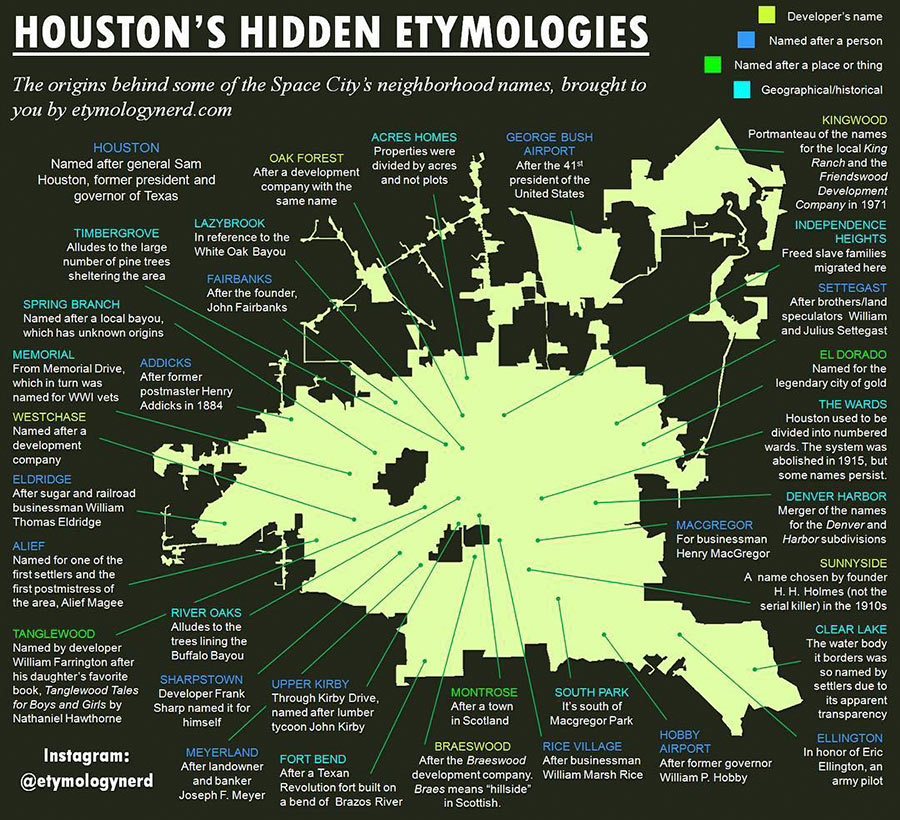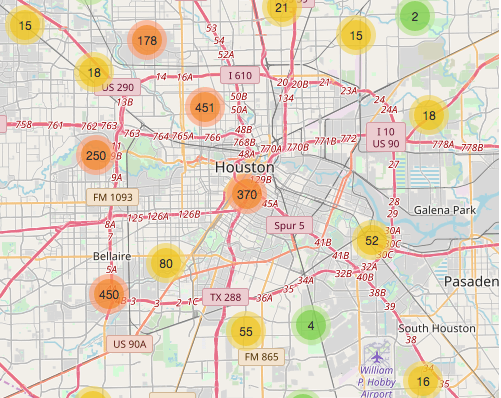
Putting Google’s Landsat Annual Time Lapse function to work, Texas architect Samuel Aston Williams has created animated .GIFs that give a satellite’s view of how certain cities — Shanghai, Atlanta, Lagos, etc. — have changed during the past 30 years. And here’s Houston.
- The Devastating Impact of 30 Years of Sprawl, As Seen From Space [Atlantic Cities]
Image: Samuel Aston Williams via Atlantic Cities





We’re just like bacteria!
Depressing
if urban sprawl is reducing rural population sizes then it’s still a win-win.
glass is still half full you gloomy guss’.
How is a reduced rural population good or bad?
“We’re just like bacteria!”
Yes, I think bacteria also tend to sprawl, as do most living things.
And it looks like an island appeared in the last decade in Galveston Bay.
I am a big fan. Thanks for the mention!
The expansion of the Katy Freeway (and other freeways)is also a sight to behold.
@Dana-X: That’s the dredge spoil island created as a bird rookery…
http://betterbay.org/releases/2000_01_26.htm
This GIF shows us spreading like cancer. Even though the recent recession sucked, I was hopeful that the one good thing to come out of it would be a breather for our sprawl…but we never skipped a beat.
Good find, Dave. Even the birds got their own suburban development.
“Devastating” impact? Yeah, it sure is devastating here in Texas, what with all that economic growth and prosperity. And man, I’m sure all those people in LA pine for those “pre-sprawl” days — I mean, the sunsets *were* very beautiful, even if you couldn’t see the mountains or fly without an inhaler.
Because surely all those people living in “McMansions, overpriced condo developments and blocks of cookie-cutter townhouses” would be better off living in giant Hong Kong style highrises, if they’d only realize that The Atlantic writers, editors (and of course their enlightened readers) know what’s best for them.
Ah, yes, and comparing US cities to 3rd world countries — what a remarkably deep and insightful commentary Mr. Metcalfe has provided there. Indeed, his thoughtful considerations on how the underlying cultures, regulatory environment, social and political movements affect the growth of urban cores and impact surrounding areas has me convinced about the evils of “bloating cities”.
Not that I should have expected anything less out of an Atlantic Cities piece.
Chris, i mentioned it as a good thing because i can only assume that the opponents and those depressed by never-ending sprawl are primarily concerned with the environment and inefficient use of resources (which is fine, efficiency is something we should all strive for). I’m not familiar with any other drawbacks to sprawl that people could find so offensive.
rural populations require more resources (both monetary and natural) in order to maintain the same standards of living as urban folk. if these rural folks are moving to the city to raise their standards of living and creating sprawl, then that sprawl still has a positive net benefit both in distribution/efficiency of spending federal dollars and use of natural resources. not to mention everyone should have the right to strive to increase their living standards and i’d imagine 95% of the country can’t afford to live in the dense urban models that the idealist among us tend to envision.
Sprawl is only devastating to landed locked control freaks like you see back East. Are over-populated concrete jungles really the solution?